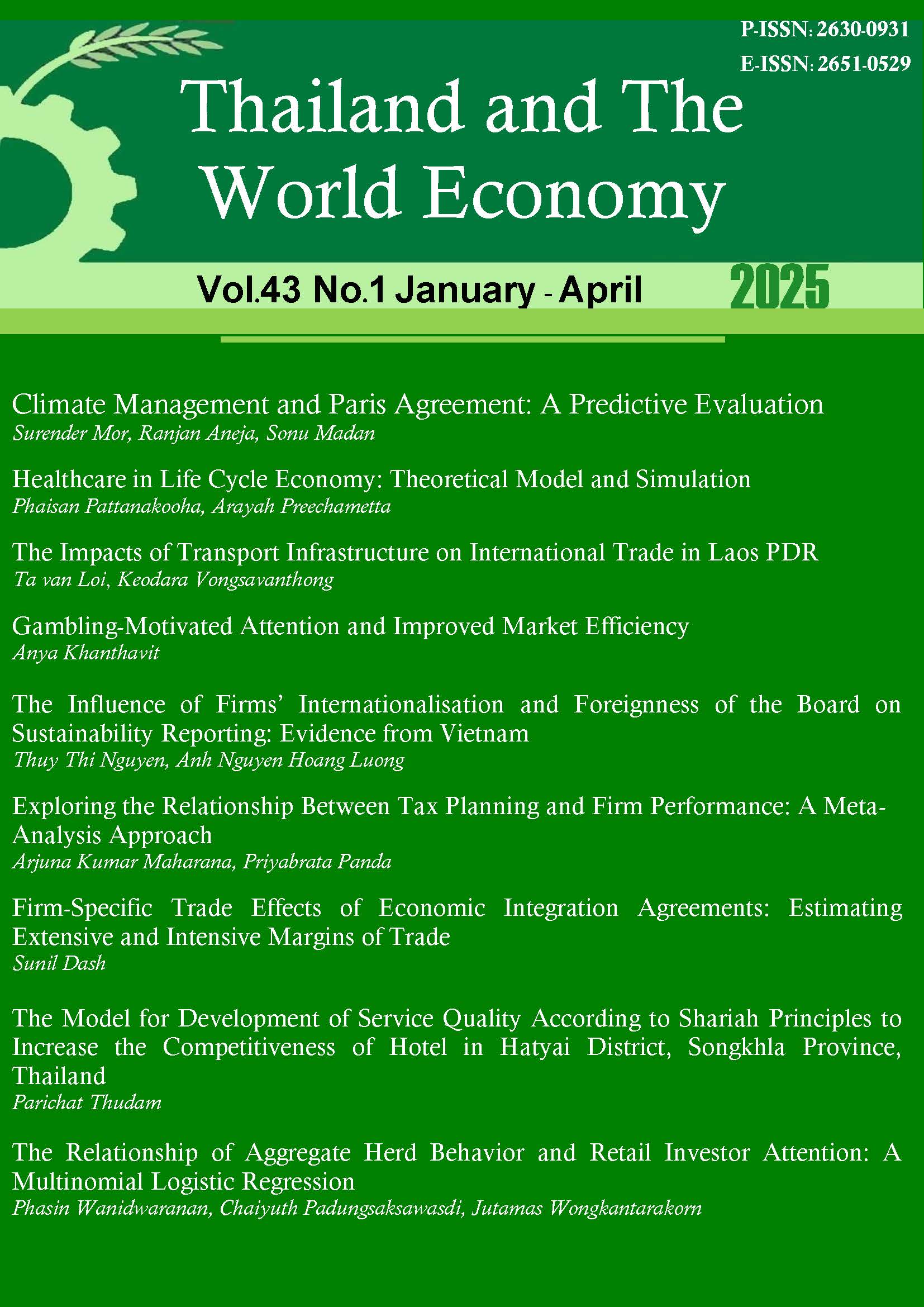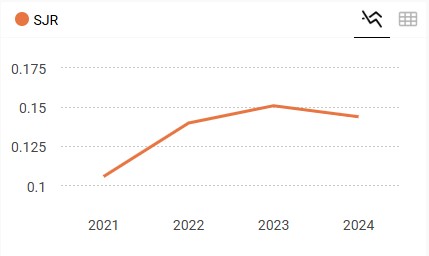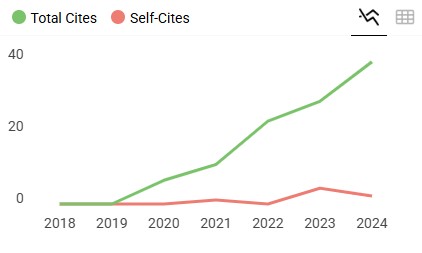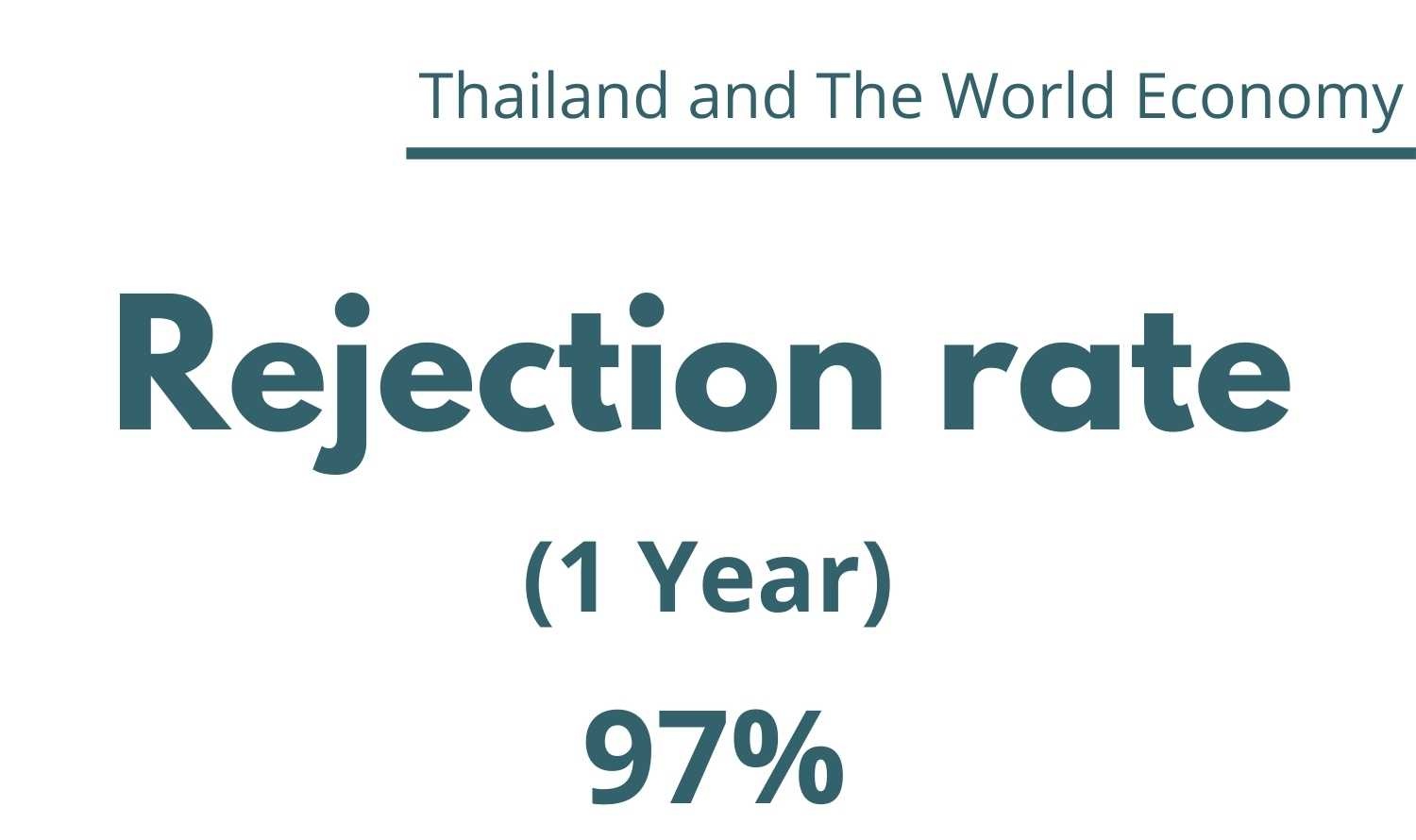Firm-Specific Trade Effects of Economic Integration Agreements: Estimating Extensive and Intensive Margins of Trade
Keywords:
Economic Integration Agreements, International Trade, Firm Margins, Economic Integration Agreements; International Trade; Extensive Margins; Intensive Margins, Intensive MarginsAbstract
By utilizing panel statistics of 1520 country pairs and economic integration agreements (EIAs) from 2007 to 2017, this paper presents evidence of the effect of EIAs on export margins, i.e., both extensive (firms) and intensive margins (average exports per firm). In doing so, this work adds empirical support to the relevant literature on trade margins and sheds light on a new “firm” aspect of trade margins concerning EIAs. Estimating a structural gravity model with exporter-time, importer-time, and country-pair fixed effects reveals that EIAs primarily increase the average exports per firm but have a smaller impact on the number of exporting firms. It further examines whether different “types” of EIAs have different effects on these margins and uncovers that the higher the degrees of integration agreements, the stronger the impact on average exports per firm.
References
Alessandria, G., Arkolakis, C., & Ruhl, K. J. (2021). Firm dynamics and trade. Annual Review of Economics, 13, 253-280.
Arkolakis, C., Costinot, A., & Rodríguez-Clare, A. (2012). New trade models, same old gains? American Economic Review, 102(1), 94-130.
Augier, P., Gasiorek, M., & Lai Tong, C. (2005). The impact of rules of origin on trade flows. Economic Policy, 20(43), 568-624.
Baier, S. L., & Bergstrand, J. H. (2007). Do free trade agreements actually increase members' international trade? Journal of International Economics, 71(1), 72-95.
Baier, S. L., Bergstrand, J. H., & Feng, M. (2014). Economic integration agreements and the margins of international trade. Journal of International Economics, 93(2), 11.
Baier, S. L., Bergstrand, J. H., & Vidal, E. (2007). Free trade agreements in the Americas: Are the trade effects larger than anticipated? World Economy, 30(9), 1347-1377.
Balassa, B. (2013). The theory of economic integration. London: Routledge.
Bensassi, S., Márquez-Ramos, L., & Martínez-Zarzoso, I. (2012). Economic integration and the two margins of trade: An application to the Euro-Mediterranean agreements. Journal of African Economies, 21(2),
Bergstrand, J. H., & Baier, S. L. (2017). Database on economic integration agreements. Retrieved from the NSF-Kellogg Institute. https://sites.nd.edu/jeffrey-bergstrand/database-on-economic-integration-agreements/
Bergstrand, J. H., Larch, M., & Yotov, Y. V. (2015). Economic integration agreements, border effects, and distance elasticities in the gravity equation. European Economic Review, 78, 307-327.
Bernard, A. B., Jensen, J. B., Redding, S. J., & Schott, P. K. (2007). Firms in international trade. Journal of Economic Perspectives, 21(3), 105-130.
Berthou, A., & Fontagné, L. (2008). The euro and the intensive and extensive margins of trade: Evidence from French firm-level data. CEPII Working Paper No. 2008-06, Retrieved from http://cepii.fr/PDF_PUB/wp/2008/wp2008-06.pdf
Brenton, P., & Manchin, M. (2003). Making EU trade agreements work: The role of rules of origin. World Economy, 26(5), 755-769.
Chaney, T. (2008). Distorted gravity: The intensive and extensive margins of international trade. American Economic Review, 98(4), 1707-1721.
Correia, S., Guimarães, P., & Zylkin, T. (2020). Fast poisson estimation with high-dimensional fixed effects. The Stata Journal, 20(1), 95-115.
Deardorff, A. (1998). Determinants of bilateral trade: Does gravity work in a neoclassical world?. In J. A. Frankel (Ed.), The Regionalization of the world economy, (pp. 7-32), Chicago: University of Chicago Press.
Egger, P., Larch, M., Staub, K. E., & Winkelmann, R. (2011). The trade effects of endogenous preferential trade agreements. American Economic Journal: Economic Policy, 3(3), 113-143.
Egger, P. H., & Wolfmayr, Y. (2018). International trade data and empirical patterns. In, B. A. Blonigen & W. W. Wilson (Eds.), Handbook of international trade and transportation (1st ed., pp. 79-140). Cheltenham: Edward Elgar Publishing.
Frankel, J. A., Stein, E., & Wei, S.-J. (1997). Regional trading blocs in the world economic system. Washington, D.C.: Peterson Institute for International Economics.
Helpman, E., Melitz, M., & Rubinstein, Y. (2008). Estimating trade flows: Trading partners and trading volumes. The Quarterly Journal of Economics, 123(2), 441-487.
Ilzkovitz, F., Dierx, A., Kovacs, V., & Sousa, N. (2007). Steps towards a deeper economic integration: The internal market in the 21st century 90. European Commission Working Paper No 271. Retrieved from https://ec.europa.eu/
economy_finance/publications/pages/publication784_en.pdf
Krueger, A. O. (1997). Free trade agreements versus customs unions. Journal of Development Economics, 54(1), 169-187.
Krueger, A. O. (2012). Free trade agreements as protectionist devices: Rules of origin. In J. R. Melvin , J. C. Moore & R. G. Riezman (Eds.), Trade, theory, and econometrics (1st ed., pp. 113-124). London: Routledge.
Manchin, M., & Pelkmans-Balaoing, A. O. (2007). Rules of origin and the web of East Asian free trade agreements. World Bank Working Paper No 4273. Retrieved from http://hdl.handle.net/10986/7456
Márquez-Ramos, L., Florensa, L. M., & Recalde, M. L. (2015). Economic integration effects on trade margins: Sectoral evidence from Latin America. Journal of Economic Integration, 30(2), 269-299.
Melitz, M. J. (2003). The impact of trade on intra-industry reallocations and aggregate industry productivity. Econometrica, 71(6), 1695-1725.
Melitz, M. J., & Ottaviano, G. I. (2008). Market size, trade, and productivity. The Review of Economic Studies, 75(1), 295-316.
Melitz, M. J., & Trefler, D. (2012). Gains from trade when firms matter. Journal of Economic Perspectives, 26(2), 91-118.
OECD. (2017). Trade by partner countries and size-class. Retrieved from https://stats.oecd.org/Index.aspx?DataSetCode=TEC10_REV4
Rose, A. K., & Honohan, P. (2001). Currency unions and trade: The effect is large. Economic Policy, 16 (33), 449-461.
Schott, J. J. (2004). Free trade agreements: US strategies and priorities. Washington, D.C.: Peterson Institute for International Economics.
Silva, J. S., & Tenreyro, S. (2006). The log of gravity. Review of Economics and Statistics, 88(4), 641-658
Soete, S., & Van Hove, J. (2017). Dissecting the trade effects of Europe’s economic integration agreements. Journal of Economic Integration, 32 (1), 193-243.
Wooldridge, J. M. (2010). Econometric analysis of cross section and panel data. Cambridge, Massachusetts: MIT Press.
WTO (2020). Regional trade agreements database. Retrieved from http://rtais.wto.org/
Yotov, Y. V., Piermartini, R., Monteiro, J.-A., & Larch, M. (2016). An advanced guide to trade policy analysis: The structural gravity model. Retrieved from WTO. https://www.wto.org/english/res_e/booksp_e/advancedwtounctad2016_e.pdf
Downloads
Published
How to Cite
License
Copyright (c) 2024 Thailand and The World Economy

This work is licensed under a Creative Commons Attribution-NonCommercial-NoDerivatives 4.0 International License.










